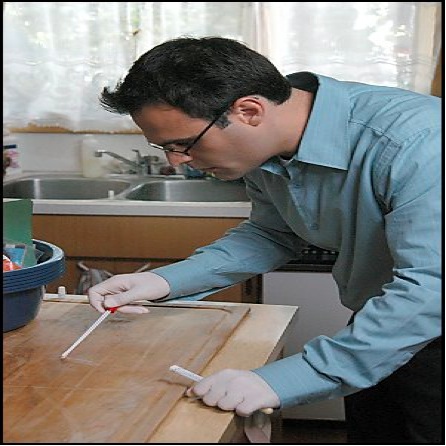This brings me back to my Kitchen Crimes days when we analyzed dishcloths and sponges from 13 Winnipeg homes and confirmed the presence of pathogenic microorganisms. Given that bacteria are all around us and providing a medium that is moist, porous and contains food particles left at room temperature, the following is not surprising.
Peter Dockrill of Science Alert writes
Scientists in Germany have conducted what they say is the world’s first comprehensive study of contamination in used kitchen sponges, and it backs up we already feared: these soggy, porous ‘cleaning products’ are positively teeming with living bacteria.
Researchers led by Furtwangen University ran genetic sequencing on samples from 14 different used kitchen sponges and ended up finding 362 different types of bacteria happily lounging within all that comfortable, springy foam.
Fortunately for you and me, the majority of this bacteria was in fact not harmful – but some of it was.
“What surprised us was that five of the ten [types] which we most commonly found, belong to the so-called risk group 2 (RG2),” says lead researcher, microbiologist Markus Egert, “which means they are potential pathogens.”
These included Acinetobacter johnsonii, Moraxella osloensis, and Chryseobacterium hominis – which the researchers say can lead to infections – plus Acinetobacter pittii and Acinetobacter ursingii.
Of these, bacteria in the family Moraxellaceae was the most dominant kind found, backing up previous research on sponges.
Since Moraxellaceae is also common on human skin, the researchers speculate that it might be people touching sponges that introduces this particular contamination.
It’s also that we insist on then wiping these dense bug-ridden colonies over other, potentially clean surfaces in the house, including bench tops, appliances, and kitchen sinks.
What I would find more interesting is how much of what is on the sponge actually transfers over to a dish after the application of a detergent followed by a warm water rinse.
In addition to the sequencing, the team was able to visualise the presence of bacteria in the samples in 3D using a technique called fluorescence in situ hybridisation coupled with confocal laser scanning microscopy (FISH–CLSM).
The visualisations reveal how the large surface area, moist foam, and scattered food matter within the sponge provide the perfect, incubating habitat for bacteria.
So much so, in fact, that it’s almost hard to differentiate where the sponge (blue) stops and the bugs (red) start:
“Sometimes the bacteria achieved a concentration of more than five times 1010 cells per cubic centimetre,” says Egert.
“Those are concentrations which one would normally only find in faecal samples. And levels which should never be reached in a kitchen.”
The authors recommend changing the sponge on a weekly basis. Dischloths are no better.


.jpg)
 1. Wash hands thoroughly before and after preparing food. Lather with soap and water for at least 15 seconds. Rinse well and dry with a clean towel.
1. Wash hands thoroughly before and after preparing food. Lather with soap and water for at least 15 seconds. Rinse well and dry with a clean towel. In one episode, I dressed up in some sort of a space suit equipped with facial gear and so on (more for effect than anything else), but it was to prove a point. Mice like to eat food so if food is left on the floor, uncovered, mice will be there.
In one episode, I dressed up in some sort of a space suit equipped with facial gear and so on (more for effect than anything else), but it was to prove a point. Mice like to eat food so if food is left on the floor, uncovered, mice will be there.